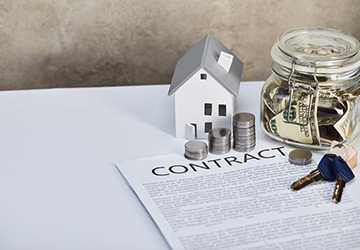People always seek new and innovative ways to do successful and profitable property investment strategies. This is a way of buying a property, keeping it for a short period, and then selling it further at a more excellent price than the original one. House flipping has arisen as an enticing and successful venture for aspiring real estate entrepreneurs in the fast-paced world of real estate. Many bright House flipping tips involve doing a profitable property investment, leading to a successful house flipping. The appeal of purchasing a home or flipping for profit at a low cost, upgrading it with intelligent upgrades, and selling it for an enormous profit captured many people's thoughts. On the other hand, the art of successful House flipping for profit requires rigorous study, insightful planning, and diligent execution.
This comprehensive article will examine the top five tactics for successfully house flipping for profit and reaping the benefits of a booming property investment endeavor. Whether you're a seasoned real estate professional trying to build your resume or a newbie looking to break into the world of flipping, these tried-and-true tactics will put you on the right track.
1.Research and Planning
Thorough study and preparation are the first and most essential steps in the house flipping process. House flipping tips, and success depend on an in-depth grasp of the real estate market and the ability to make sound decisions. Learn current patterns, typical property prices, and demand for real estate. Determine which neighborhoods have the potential for development and appraisal. Consider variables like accessibility to schools, transportation, facilities, and potential development plans, as these can substantially impact a property's appraised value. Identify possible properties that correspond with the objectives you have for investing based on your market study. Search for damaged properties, bank-owned properties, or residences in dire need of reconstruction, as these can offer possibilities to purchase below market value for real estate entrepreneurship. To determine the profit potential of each property, carefully assess its condition, probable repair costs, and predicted after-repair value (ARV). Create a well-organized business plan detailing your House flipping objectives, method of investment, and expected timescale. Your way of departure should include whether you plan to sell the real estate fast or keep it as a lease for a long time for revenue. A defined plan will assist you in remaining concentrated and committed throughout the house-flipping process.

2.Renovation with a Purpose:
Reconstruction with a goal is a critical technique for profitable property flipping. This stage concentrates on strategically improving the property to raise its value and attractiveness to potential buyers dramatically. Perform a thorough property appraisal before beginning any renovations. Examine the property to determine its advantages, flaws, and possible areas for growth. Take note of any fundamental problems, such as ceiling issues, basement cracks, or sewer leaks, as these should be rectified first for compliance and safety. After you've inspected the home, plan your renovation budget carefully. Prioritize improvements that will have the greatest influence on the property's value. A significant expenditure should be allocated to areas likely to sway purchasers, such as the kitchen area, bathrooms, and curb appeal. Look into substituting old appliances with newer, more environmentally friendly models. To give the dining area a new and modern style, repair or restore cupboards, upgrade counters, and add fresh hardware. Similarly, simple improvements such as a fresh layer of paint, new mirrors, and updated decorations can revitalize a bathroom and many other areas.
3.Budget Management
Budgeting is an integral part of successful house flipping. Adequate financial planning guarantees that you keep within your financial constraints while maximizing your profit potential. Begin by developing a detailed budget comprising all the expenses related to the house-flipping enterprise. This should include not just the purchase price of the home but also any improvements costs, carrying costs, real estate agent fees, closing charges, and any other extraneous expenses. Make careful to set aside money for unanticipated expenditures or complications that may occur during flipping. Improve how you negotiate to get the most significant discounts on supplies and services. Dealing with contractors, suppliers, and other parties involved can help you save money and keep your budget under control.
4.Time Management
Time management is essential in the house-flipping process. Managing your project's timeframe effectively can significantly impact your profitability and success. Create a comprehensive timeline outlining the many steps of your house flipping project, from property acquisition to renovation completion and listing. Divide each step into precise tasks and assign a reasonable deadline for completion. An accurate timeline will act as your blueprint and keep you on track with the project. Setting realistic targets will assist you in managing expectations and avoiding any delays. Be aware of any external circumstances that may affect the timeframe, such as weather conditions, and alter your goals accordingly. Prioritise renovations that will most influence the property's marketability and value. To ensure a safe and habitable residence, prioritize critical repairs and renovations. Then, prioritize improvements vital in attracting potential purchasers and increasing the property's desirability.

5.Marketing and Selling
Marketing and selling are critical components of the house flipping process. To maximize your return on investment, you must effectively market the property and secure a timely and successful sale. Invest in professional photographs to highlight the best features of the home. High-quality pictures can provide an excellent first impression and attract potential consumers when used online and in marketing materials. Consider setting the House to increase its appeal and assist purchasers in visualizing themselves living in the place. Include virtual tours and 3D visualization to give potential buyers a hands-on experience with the home. This technology allows purchasers to digitally explore the layout and style of the House, making it easier for them to imagine themselves in the area.
Conclusion
To conclude, House flipping for profit can be a profitabendeavorour for real estate investors, but it requires careful preparation, effective budget management, and strategic execution. Thoroughly research the market, rigorously plan your budget, refurbish with a purpose, manage your time wisely, and sell your house effectively. By applying these top five methods, you may improve your chances of success in the competitive world of House flipping. Adaptability and perseverance are essential in the ever-changing real estate market, so stay focused and make informed judgments.


